Disclaimer: This blog post contains affiliate links. If you make a purchase through these links, I may earn a small commission at no additional cost to you. Learn More. Thank you for supporting our garden community.
Foraging Dandelions: A Comprehensive Guide
Foraging refers to the act of gathering wild plants for food, and dandelions are a prime example of a plant that can be foraged for various purposes. In this blog post, we delve into the art of foraging dandelions, focusing on the art of foraging and providing you with everything you need to know about this humble yet versatile plant.

Dandelions are the best beginner forager plants as they are easily recognizable, widespread, and easy to use in the kitchen.
Foraging Dandelions
In this blog post, you will learn about foraging dandelions, a versatile plant with various culinary and medicinal uses. We will discover how to identify dandelions through their distinct features, allowing for confident foraging.
This post also highlights the ideal seasons for harvesting dandelions and provides insight into the nutritional value of different parts of the plant. Furthermore, you will gain knowledge about the diverse ways they can incorporate dandelions into recipes, teas, and herbal remedies, enhancing your culinary and wellness repertoire.
History of Dandelions
Dandelions have a rich history intertwined with human civilization. Although considered by many as a pesky weed today, dandelions were once highly revered for their medicinal and culinary properties. They trace their origins to Eurasia, where they were used for thousands of years as a food crop.
Dandelions were introduced to North America by European settlers. Native American tribes recognized the value of dandelions and used them in traditional herbal remedies for various ailments.
In European folklore, dandelions were associated with divination and used in love potions. Over time, dandelions became naturalized in different regions and have become a familiar sight in meadows, lawns, and even urban environments.
Understanding the historical significance of dandelions adds an element of appreciation for their resilience and the wisdom of our ancestors in harnessing their benefits.
Identifying Dandelions
Dandelions are easily recognizable with their vibrant yellow flowers and puff-ball seed heads. The leaves are toothed and can grow up to 12 inches in length. Being well-versed in dandelion identification is crucial before beginning your foraging journey.
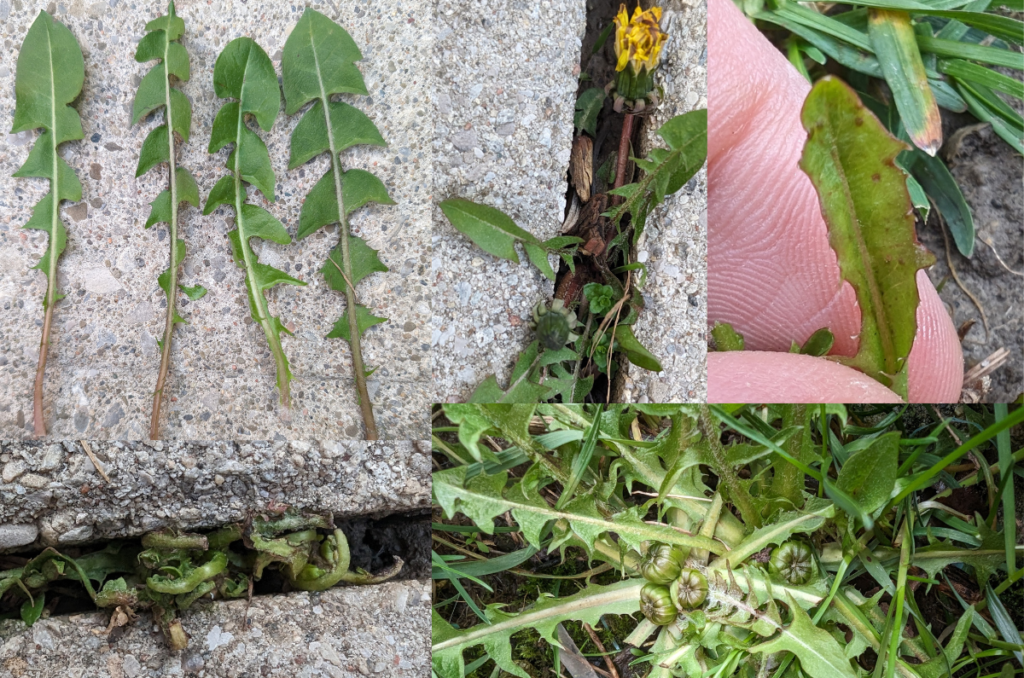
Dandelion leaves come in many different shapes and sizes; some are large, some are small, some are toothed, some are lobed, some are thin, some are fat. The point is that you have to know all the characteristics of dandelions to properly identify them.
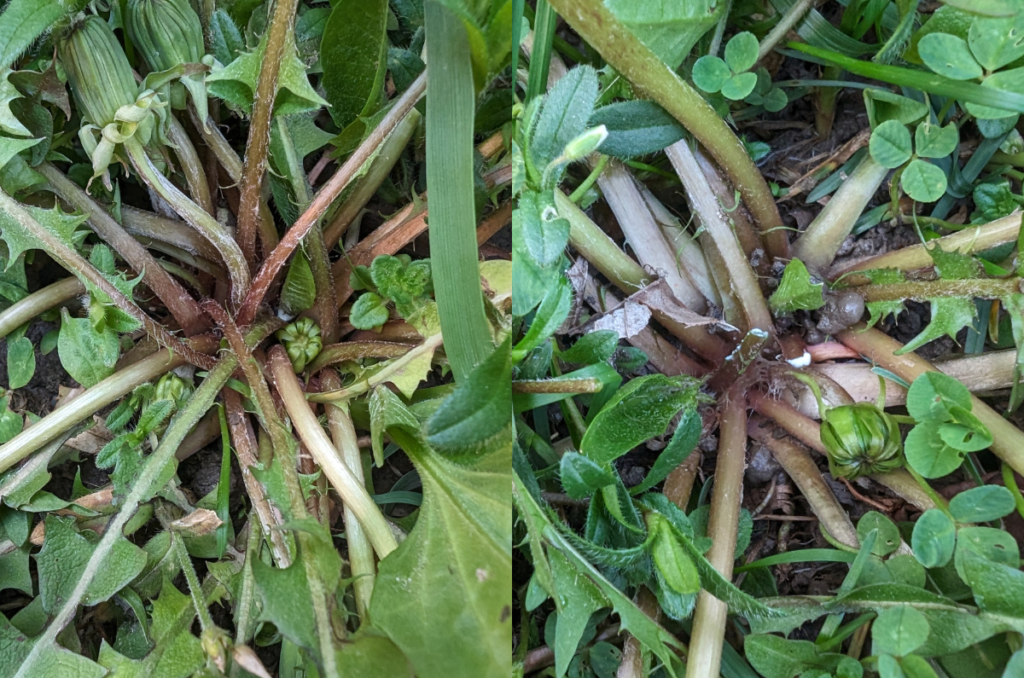
Dandelions often grow in clusters of four or five plants, all stemming from the same taproot. That being said, the taproot of a dandelion can grow up to 15 feet deep (what!?).
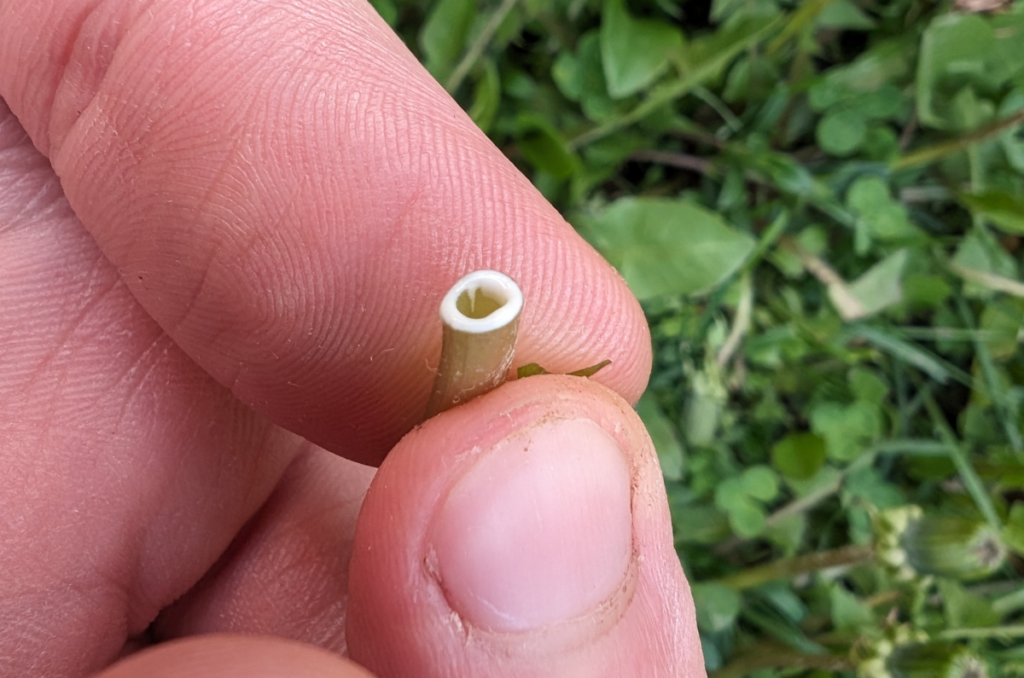
Another factor when identifying dandelions is the white sap that oozes out when the stem is broken. Break off a piece of leaf or flower stem, if you see a white sap coming out, good, if you don’t, bad.
Why are Dandelions so Common
The humble dandelion is considered one of the most successful plants in the history of life on Earth. This is attributed to many factors that help dandelions grow:
- Long taproot: As mentioned previously, a dandelion’s taproot can grow up to 15 feet deep. This means that it can pull up nutrients from deep in the subsoil that other plants cannot access. However, it also means that if the plant is damaged at any point along the root, it will always (always) grow back.
- Lifespan: Dandelions can reliably live for 13+ years, meaning that every single year they will produce seeds that will become new plants.
- Seeds: A single dandelion plant can produce up to 2000 seeds! That’s crazy. The seeds are also equipped with a parachute-like device that help them fly away in the wind, where they can germinate and take over somewhere else.
- Plant division: As mentioned before, dandelions can produce clusters of plants from one single taproot, meaning they take up less space and take over a landscape much easier.
- Europeans: Probably the most likely factor, the Europeans. They brought dandelions all over the globe as they colonized and settled. They were planted in gardens by settlers and slowly encroached on the surroundings.
The Foraging Season
Dandelions can be foraged during the spring and fall, with the plant often thriving year-round in warmer climates. While they prefer cooler areas, dandelions can still flourish in hotter locations, making them accessible for many foragers.
The flavour of the leaves turns bitter when temperatures rise, but they are still completely edible. If you like that bitter green flavour, you can still forage dandelions in the summer. If you don’t like the flavour, the cooler temperatures help to keep them more mild.
Edible Parts and Nutritional Value
One of the remarkable aspects of dandelions is that all parts of the plant are edible, offering unique nutritional value. The leaves, for example, are low in calories while being rich in essential vitamins and minerals such as vitamin K, A, C, E, iron, calcium, magnesium, and potassium. Incorporating dandelion leaves into your salads or stir-fries can provide a nutrient boost to your meals.
Dandelion flowers can be used to make infused oils, tea, or even dandelion wine. I like to eat the flower petals straight from the garden; they are fairly sweet and floral-tasting.
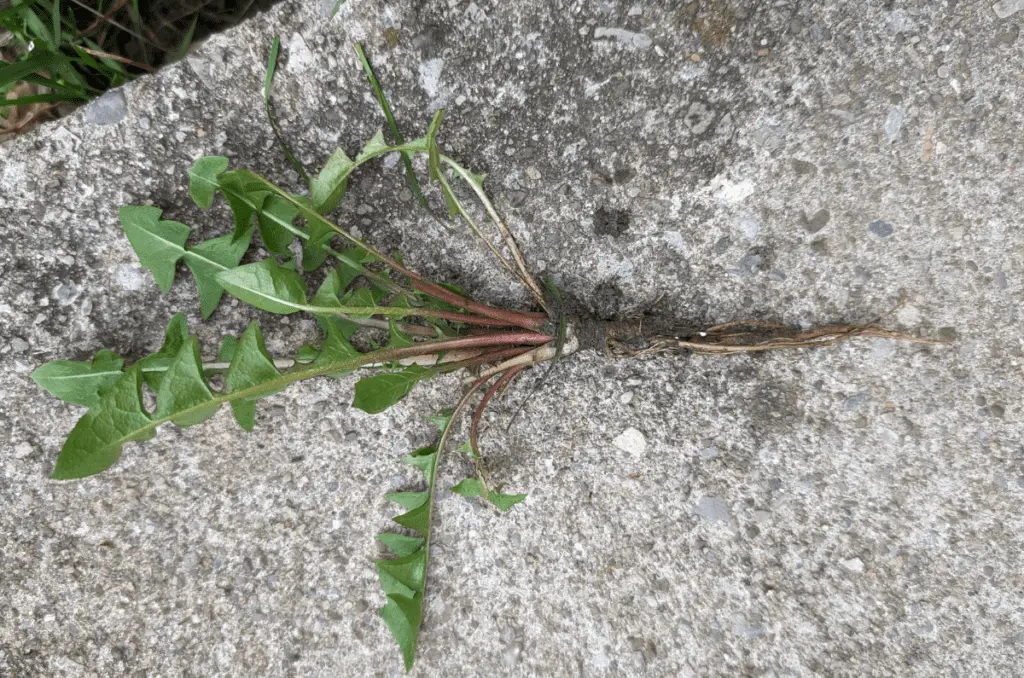
Additionally, the roots can be roasted and used as a coffee substitute, offering an interesting and caffeine-free alternative to traditional coffee.
Culinary and Medicinal Uses
Throughout history, dandelions have been used for culinary, medicinal, and even cosmetic purposes. Their leaves can be used fresh in salads or cooked in various dishes. The bright yellow flowers can bring medicinal benefits when made into herbal remedies or added to teas, potentially aiding in digestion, kidney health, and skin issues.
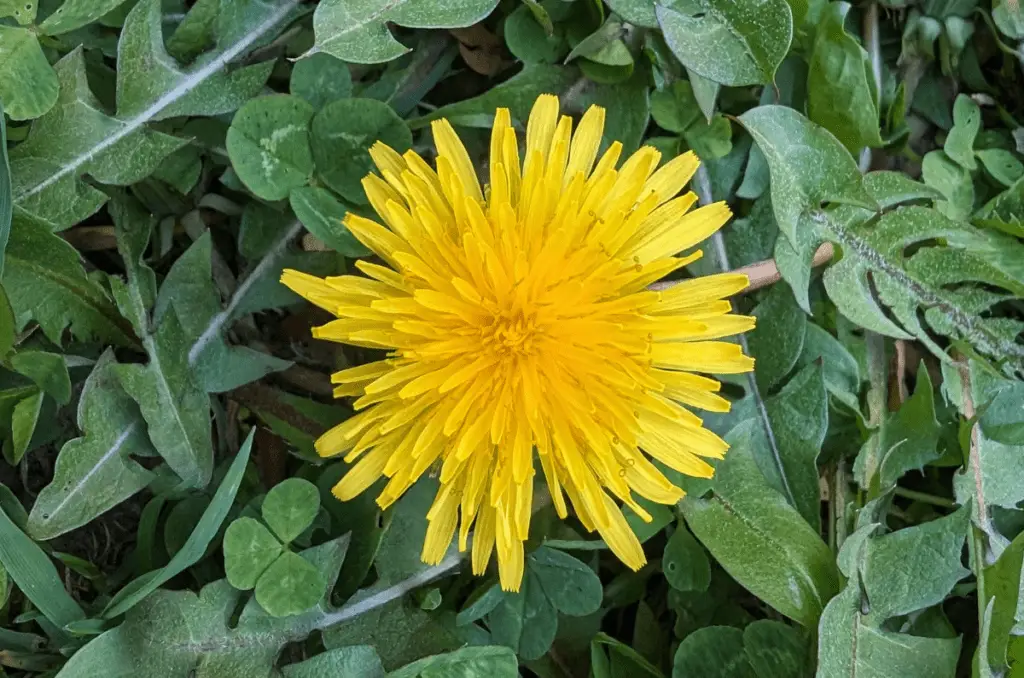
Some Native American tribes utilized dandelion roots and leaves to treat kidney disease, heartburn, and upset stomachs. Today, herbalists still incorporate dandelion into their remedies, recognizing its potential health benefits.
Safety Considerations
When foraging dandelions or any other wild plants, it is crucial to ensure proper identification. Additionally, always choose areas that have not been treated with pesticides or other chemicals to ensure the safety and quality of the harvested plants.
You should also avoid privately-owned land, as you are not legally allowed to forage without permission. You are, however, allowed to forage on most public property, but it is always good to make sure before getting caught in the act.
Frequently Asked Questions
You can forage the leaves, flowers, and roots of dandelions. Each part has a slightly different flavor and appropriate uses.
Dandelions are common in many areas and can be found in lawns, parks, meadows, and along roadsides. Always be sure to forage in an area that is free of pesticides or herbicides.
Yes, it’s a good idea to rinse dandelions thoroughly before consumption, regardless of where you forage them. They are low-growing and may have touched the ground or been walked on by animals.
Dandelion greens can be added to salads, stir-fries, or used as a base for pestos. Dandelion flowers can be used to make wine, jelly, or fritters. Dandelion roots can be roasted and used as a coffee substitute.
Products
For all-purpose organic fertilizers, check out Arber.
For organic, non-GMO garden seeds, check out SeedsNow.
For a wide selection of garden plants, check out Nature Hills Nursery.
For gardening equipment, check out Bootstrap Farmer.
Conclusion
Foraging dandelions can open up a world of possibilities for exploring nature’s bounty and tapping into the health benefits of this versatile plant. By learning to identify dandelions, understanding their seasons and nutritional value, and exploring their culinary and medicinal uses, you can embark on a rewarding journey of foraging dandelions.
Remember to do thorough research, practice responsible foraging, and enjoy the process of connecting with the natural world.
Ready to start foraging dandelions? Take a walk in your local park or explore nearby fields, and discover the many ways you can incorporate this resilient and nutritious plant into your life. Share your experiences and recipes with us in the comments below!
If you want to learn more about gardening, foraging, nature, and sustainability, check out The Real Gardener on Instagram, YouTube, and Pinterest.
Pin this post for later:
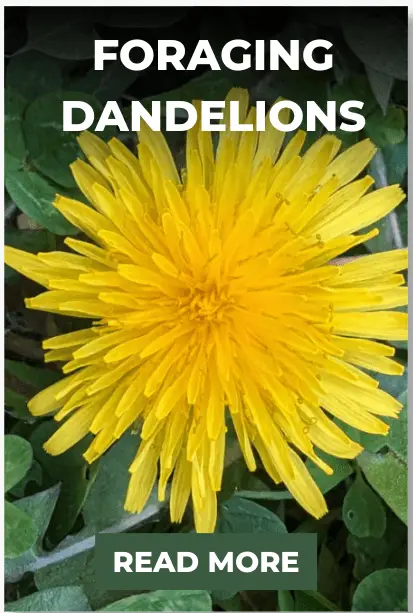
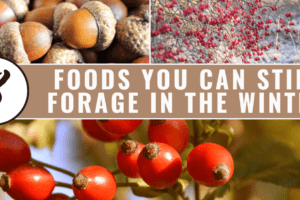
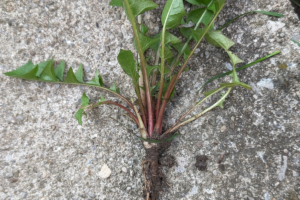
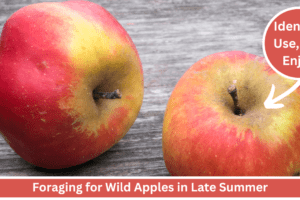
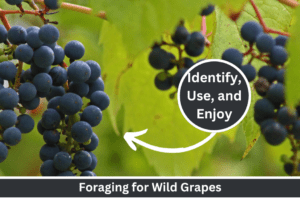
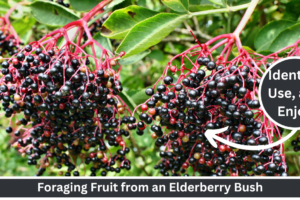
Leave a Reply